|
WC vs. History: Lost Edition - Introduction to Carrier Raids
The reason there are two WC vs History's for the birthday is rather quite simple. LOAF lost this one in his email. I sent him the history parts asking for some WC polish. So it's sat idly for months. But we are now able to present it to you complete! And it's almost rather timely, with Confederation Day being a few weeks off.
“In the annals of naval warfare, no naval surface ship had greater revolutionary impact on the art and concept of war at sea than has the aircraft carrier.” Admiral T.H. Moorer, 1974
The Raids on Pearl Harbor and McAuliffe, in 1941 and 2634 respectively, ushered in the Ages of the Aircraft and Space Carrier. These were not the inaugural operation of the respective capital ships, both types of carriers had existed for a number of years prior and had participated in both combat operations and training exercises. However, the respective raids helped to define the place and role of the carrier within the Fleet. They were not instantly crowned Queen of the Seas over the battleship, which had reigned supreme for a considerable time before the newcomer with wings arrived and offered a challenge. However, in order to challenge the battleship some developments were required in both situations.
The Raid on Pearl Harbor was not made possible by a specific technological breakthrough as the Raid on McAuliffe was aided by. Pearl Harbor was possible because of a doctrinal development. The credit is given to Genda Minoru for seeing the potential for a multi-carrier force. He said his inspiration for the idea came from, of all places, an American movie newsreel showing the battleships and carriers of the US Fleet steaming in line together in the late 1930s. By grouping the carriers of the Imperial Navy into a single striking force the Japanese created a new weapon, the fast carrier task force. The large number of aircraft available to a multi-carrier force allowed it to conduct powerful strike operations. Kido Butai (Mobile Force), as the Japanese called the 1st Air Fleet, conducted its first operation at Pearl Harbor and continued with a string of successes across the Pacific and Indian Oceans in early 1942.
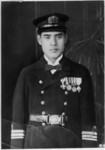
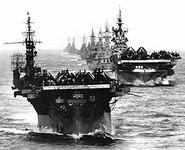 Captain Genda during the war and it was an image similar to this one he said inspired the idea for Kido Butai.
Captain Genda during the war and it was an image similar to this one he said inspired the idea for Kido Butai.
The carriers of Kido Butai (Akagi, Kaga, Soryu, Hiryu, Shokaku, Zuikaku) embarked more than 350 aircraft on their six flight decks. In December 1941, this was the most powerful aerial force the world had known. Armed with the devastating Type 91 aerial torpedo and modified 16” naval shells as armor-piercing bombs, the planes of Kido Butai inflicted grave damage on the ships of the Pacific Fleet. It was not the first carrier raid, that honor belongs to the British in World War I.
The British began operations with ships capable of carrying and launching aircraft in 1917. HMS Furious was the first ship declared an “aircraft carrier”. HMS Furious was not an aircraft carrier in the classic sense as built. It was a battlecruiser that was modified during construction to have a short “flying-off and landing deck” in place of the forward turrets. You can only take your hat off and salute Squadron Commander Edwin Dunning who landed in that manner twice before being killed on his third attempt while attempting to find a better approach solution. Furious returned to port to have her aft turrets removed and a dedicated landing deck and hangar installed.
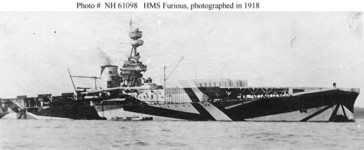
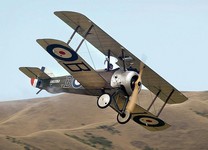 HMS Furious, as built, and the Sopwith Camel, both took part in the first carrier raid.
HMS Furious, as built, and the Sopwith Camel, both took part in the first carrier raid.
Operation F.7 was conducted from HMS Furious on 19 July 1918. The raid targeted a German airbase at Tondern, Germany. Seven Sopwith Camels from Furious struck the airbase and destroyed two zeppelins for the loss of one man. The Tondern Raid was the inaugural combat operation of capital ship-based naval aviation. However, the British raid that helped the Japanese in terms of Pearl Harbor was the Raid on Taranto in November 1940 as discussed in the previous WC vs History.
The interwar period saw experimentation with carriers by the three major navies, Britain, the United States, and Japan. The British tended to operate their carriers independently of each other whereas the United States and Japan operated their carriers in pairs. The United States and Japan developed different doctrine for operating their carrier pairs that was the result of several factors but air group size, as a result of the carrier’s physical size and where aircraft were stored onboard, played a large role. The American Navy developed what is called the “deck park”, something still in use today, where aircraft are stowed, armed, and fueled on the flight deck opposed to the hangar deck. The hangar deck is typically reserved for maintenance operations or stowage in poor weather. Stowing aircraft in this manner allowed for a greater number to be carried onboard American carriers. The Japanese stowed their aircraft in the hangars, just as the Royal Navy did with its carriers. Hangar stowage gave some protection to the aircraft from the elements and attack, but greatly limited the number of aircraft onboard. Most British carriers carried less than 45 aircraft (in some cases Royal Navy fleet carriers had air groups as small as 36) as a result of the armored flight decks and hangars. These afforded great protection to the ships (especially during 1945 when Kamikaze attacks did far less damage to British carriers than their American cousins) at great cost in terms of strike power. The Japanese attempted to resolve the problem by building their carriers with two-story hangars. This increased the number of aircraft carried, however the cost came from elevator cycle times bringing aircraft up and down. In World War II carrier warfare, time was critical.
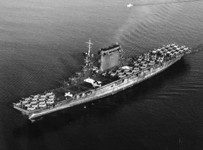 Example of the deckpark on USS Lexington (CV-2)
Example of the deckpark on USS Lexington (CV-2)
Even though the Americans and Japanese operated their carriers in pairs in the interwar years, does not mean they operated the same. True multi-carrier operations were not undertaken by American forces in the interwar period and did not begin in the Second World War until mid-1943. American carrier air groups operated independently of each other, even if in direct sight of each other, during missions. The smaller air groups of the Japanese carriers and the usage of the hangar for stowage presented the Japanese with a problem and pushed them into thinking about multi-carrier operations. They were incapable of spotting their entire air groups on the flight deck at once. Instead they had the ability to launch roughly half the air group. This forced the Japanese to come up with a solution to power projection problem. The first option was to launch the first part of the air group and let it circle while the second group was spotted on deck. The problem with that method is that it takes forty-five (thirty if they are really moving) to spot the flight deck for launch. That’s forty-five minutes of time and fuel burned circling the carrier. This method was unworkable. The solution was to use the ability of each carrier in a division to launch half its aircraft to create a combined strike. One carrier launched its dive-bomber squadron and a number of fighters for escort, while the other carrier launched its attack-squadron (torpedo) and additional fighters. Using this method the Japanese were able to put up combined strikes from their smaller carriers that packed a considerable punch. If another wave was to follow the first, the carriers simply launched their remaining squadrons, which still produced a balanced strike package of dive and torpedo planes.
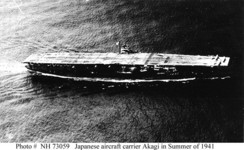
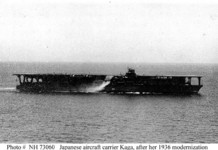
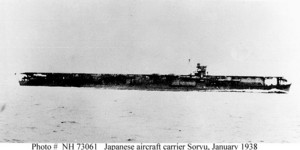
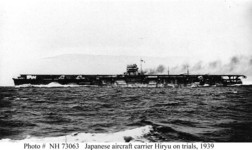
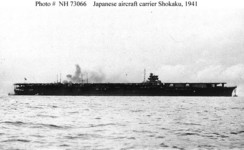
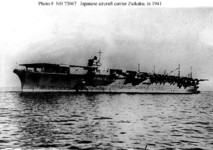 The six carriers of Kido Butai: Akagi, Kaga, Soryu, Hiryu, Shokaku, and Zuikaku.
The six carriers of Kido Butai: Akagi, Kaga, Soryu, Hiryu, Shokaku, and Zuikaku.
The development of Kido Butai, and the fast carrier task force, revolutionized naval warfare. It allowed for operations like Pearl Harbor to be considered, planned and executed. It gave Japan a “leg up” in this regard, as almost no American considered an attack on Pearl Harbor possible. It was supposed to be a of the “Gibraltar of the Pacific”, like British Singapore and Japanese Truk. The US Pacific Fleet, hundreds of Navy and Army aircraft, sheer distance from Japanese possessions, all made it seem the least likely target. It also made it the perfect target.
When planning the Raid on McAuliffe the Kilrathi had doctrinal and technological problems. Much like the pre-World War II navies of the world, there was the “black shoe vs brown shoe” debate (Naval aviators wear brown shoes, whereas Line officers wear black). Was a lightly armored carrier to replace the massive guns and armor of the battlewagon? How? Certainly the shields and armor of the battlewagons along with its defensive turrets would swat away any fighters dumb enough to get too close. They needed a new weapon and a plan to use it.
Dr. William Forstchen based his Wing Commander prequel, Action Stations, on Pearl Harbor and its surrounding events, down to a narrative structure patterned after Gordon Prange's At Dawn We Slept. It should be obvious from summary alone that this was the inspiration: the novel tells the story of the Empire of Kilrah's surprise attack on the Terran Confederation's major naval base at McAuliffe. Interestingly, the scenario was not Dr. Forstchen's invention: he works within the confines of history established in the original Claw Marks manual (which itself borrowed the McAuliffe code breaking story from the Battle of Midway.)
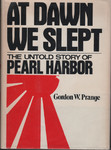
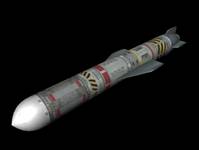
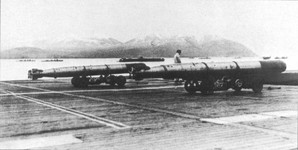 Prange's book was the inspiration for Forstchen's the attack of McAuliffe. In both raids, the torpedo played an important role.
Prange's book was the inspiration for Forstchen's the attack of McAuliffe. In both raids, the torpedo played an important role.
Many of the characters introduced or otherwise adapted in Action Stations are based on figures from the actual history. The Kilrathi Crown Prince Gilkarg and his second fleet commander, Nargth, echo the 'black versus brown shoe' debate of the US Navy. Gilkarg insists that space carriers were the way of the future while traditionalist Nargth believes that nothing will overpower the battlewagon. Much of the book forms around this argument, the same one naval tacticians had in the interwar peroid. Before 2634, the role of carriers was for performing reconnaissance and support missions as well as space-to-planet bombing. With the development of the torpedo at McAuliffe--foreseen by Gilkarg as well as Tolwyn, Richards and Turner--the dynamic changes to the one we are familiar with in the games. As in real life, it is the development of a successful torpedo that makes spacecraft capable of destroying large capital ships... and teething difficulties created by unreliable early torpedo technology causes a great deal of drama, such as an unexploded torpedo impacting with TCS Concordia.
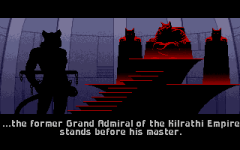
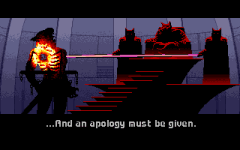 Crown Prince Gilkarg was executed by his father, Emperor Joor'rad, in 2655. Being the Emperor's son did not spare him from the cost of failure.
Crown Prince Gilkarg was executed by his father, Emperor Joor'rad, in 2655. Being the Emperor's son did not spare him from the cost of failure.
Vakka nar Jukaga, father of the famous Baron Jukaga nar Ki'ra, echoes Yamamoto by arguing that the Empire should not go to war with the Confederation. The Empire of Kilrah is similarly said to be a hollow shell, failing to assimilate what they conquer. General Long, in charge of the ground installations at McAuliffe, is a play on Pearl Harbor's General Short. The "Panama War Games," in which the Confederation is said to have experimented with fighters capable of destroying enemy capital ships, is based on the US Navy's Fleet Problem IX.
Some of the novel's references are more on-the-nose. The Confederation fields a carrier named the TCS Soryu, borrowing from one of those which served with Kido Butai. Admiral Nagomo, head of the 7th fleet at McAuliffe, is a play on Nagumo. The novel argues that he is not fit for the job, similar to that used against Nagumo who was a non-aviator second in line for the Japanese command. He should also not be confused with Admiral Nagano, who was part of the Imperial Japanese Navy General staff during the war.
The Kilrathi "Jak-tu" attack style, springing from concealment to defeat a larger foe, is similar to that which the Japanese had successfully used against Russia and China in the first third of the century and hoped to repeat at Pearl Harbor. Here the Kilrathi have used it for generations, defeating races like the Wu and the Varni and hope now to crush the industrialized Confederation before it can arm for war. As with the Japanese in the Pacific, the Kilrathi plan to strike McAuliffe while other fleets spread to grab territory and tie up Terran forces.
The Kilrathi briefing shows they have clear maps of McAuliffe, down to the base's weapons layout. At Pearl Harbor the Japanese gained ship movement information through a Honolulu newspaper and a single spy on the island, at McAuliffe we are told it was broadcast on an open vid channel. The Kilrathi are seen practicing their attack plan over and over, just like the Japanese pilots.
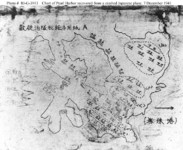
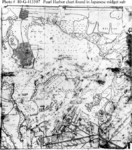
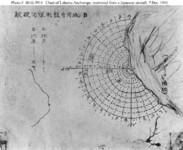 The first two maps are of Pearl Harbor captured from an aircraft and midget sub respectively. The third map is of the Lahaina Roads Anchorage in case the US Fleet was there.
The first two maps are of Pearl Harbor captured from an aircraft and midget sub respectively. The third map is of the Lahaina Roads Anchorage in case the US Fleet was there.
One significant difference is that the Confederation is strongly against mobilizing for war, even though limited war had already been declared. This is more Dr. Forstchen's particular modern politics than a commentary on history.
Finally, Dr. Forstchen invents "Confederation Day," a holiday similar to the Fourth of July on which the Kilrathi can strike. This is based on the fact that the Japanese attacked on a Sunday morning when the Navy would be at its lowest readiness. On Confederation Day, crews are on shore leave and can not be recalled in time to fend off the attack. Prior to the attack on Pearl Harbor, the US Navy staged its own series of mock attacks on the base in the 1930s. One of those the US Army bitterly protested the attack coming on a Sunday morning, not only because the Navy was able to give a black eye during the exercise, but it was Sunday! "Who attacks on a Sunday?", they'd argued. Someone who knows the Fleet tends to be home on Sundays.
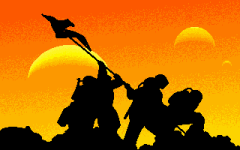
|

